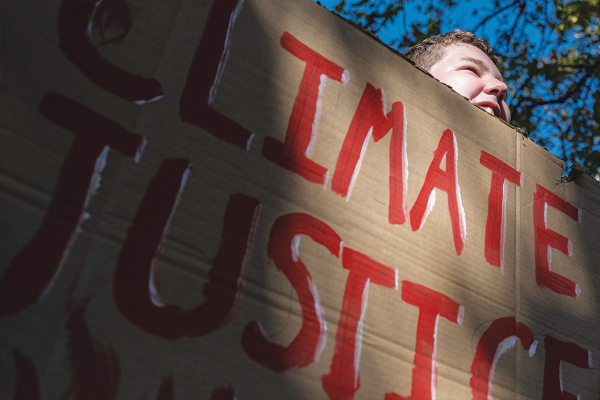School Strike 4 Climate (SS4C) and Fridays for Future joined forces in a nation-wide intergenerational climate strike across the motu on Friday, March 3. The Ōtepoti event, whose organisation was outsourced to Extinction Rebellion (XR), was smaller than most other cities, prompting some strikers to question the event’s advertisement.
About a hundred or so people gathered in the Octagon to listen to some music and a few speeches. From what we could tell, there was only one speaker who was a school student, a marked difference to previous strikes. There were a couple witty signs spotted in the crowd, with a special mention given to: “Don’t change climate, you’re too sexy haha”.
There were five core demands behind the strike: an immediate end to new fossil fuel; lower the voting age to 16; double marine reserves by 2025; establish and implement a regenerative farming transition fund for farmers; and e-bike rebates for lower income households.
The strike was spurred on by the devastation caused to the North Island by Cyclone Gabrielle. In a press release sent by SS4C and Fridays for Future, representative Caz Sheldon said, “As we start the year with deadly floods…it is more important than ever that we act now to prevent more severe weather events in the future.”
Protests held in Wellington and Auckland saw streets filled with young people. Away from the carnage of Gabrielle’s temper-tantrum, Dunedin’s looked more like a chilled get-together in the Octagon, or maybe a meeting of your local cycling club. Either way, it screamed neither “school” nor “strike”.
Youths were noticeably absent from the Ōtepoti event. The handful of highschoolers there was a little underwhelming compared to the climate-angst-fuelled turnout of the 2019 SS4C strike. Ōtepoti alone had literally thousands of kids marching down the main street; people brought their friends, cool signs, and a passion for change to the protest. It was huge, and it had been advertised weeks beforehand. Not this year.
Each person Critic Te Ārohi spoke to found out about the strike either through an Instagram post or word of mouth on the day itself. A year 13 student from Otago Girls’ High School mentioned that they “literally heard about this like three hours ago”. A couple Uni students from Auckland described the protest as “really small and quiet” compared to the strikes they had attended at home.
The lower turnout could likely be down to the fact that our good ol’ friend Covid slowed down SS4C to a near standstill, according to former SS4C co-ordinator Zak. Unsurprisingly, the momentum which had built towards the end of 2019 has somewhat dispelled. Additionally, the strikes have become more decentralised, being organised on a regional instead of a national basis.



